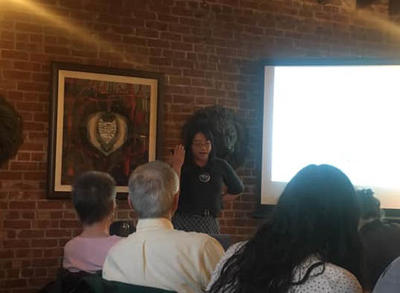The 2018-2019 colloquium series continues this coming Monday, February 25, with a talk by Jessica Coon (McGill). Same time as always, same place as always: 3:10-5 p.m., 370 Dwinelle Hall. The talk is entitled Mayan Agent Focus and the Ergative Extraction Constraint: Facts and Fictions Revisited, and the abstract is as follows:
Many languages of the Mayan family restrict the extraction of transitive (ergative) subjects for focus, wh-questions, and relativization (A’-extraction). We follow Aissen (2017) in labelling this restriction the ergative extraction constraint (EEC). In this talk, we offer a unified account of the EEC within Mayan languages, as well as an analysis of the special construction known as Agent Focus (AF) used to circumvent it. Specifically, we propose the generalization in (1).
(1) Mayan EEC generalization:
When a pronounced copy of the object structurally intervenes between the subject and the A’-probe on C, the subject is restricted from undergoing A’-extraction.
Building on existing literature on syntactic ergativity, we argue that the restriction in (1) has a similar source across the subset of Mayan languages which exhibit it: locality. Evidence that locality is the source of the problem comes from a handful of exceptional contexts which permit transitive subjects to extract in languages which normally ban this extraction, and conversely, contexts which exceptionally ban ergative extraction in languages which otherwise allow it.
We argue that the problem with A’-extracting the ergative subject across the intervening object connects to the requirements of the A’-probe on C: Mayan C is relativized to the feature [D]. This connects the Mayan patterns to recent proposals for extraction patterns in Austronesian languages (e.g. Aldridge, to appear) and elsewhere (van Urk 2015). Specifically, adapting the proposal of Coon and Keine (2018), we argue that in configurations in which a DP object intervenes between the probe on C and an A’-subject, conflicting requirements on movement lead to a derivational crash. While we propose that the EEC has a uniform source across the family, we argue that AF constructions vary Mayan-internally in how they circumvent the EEC, accounting for the variation in behavior of AF across the family. This paper both contributes to our understanding of parametric variation internal to the Mayan family, as well as to the discussion of variation in A’-extraction asymmetries and syntactic ergativity cross-linguistically.
(collaborative work with Nico Baier and Theodore Levin)



